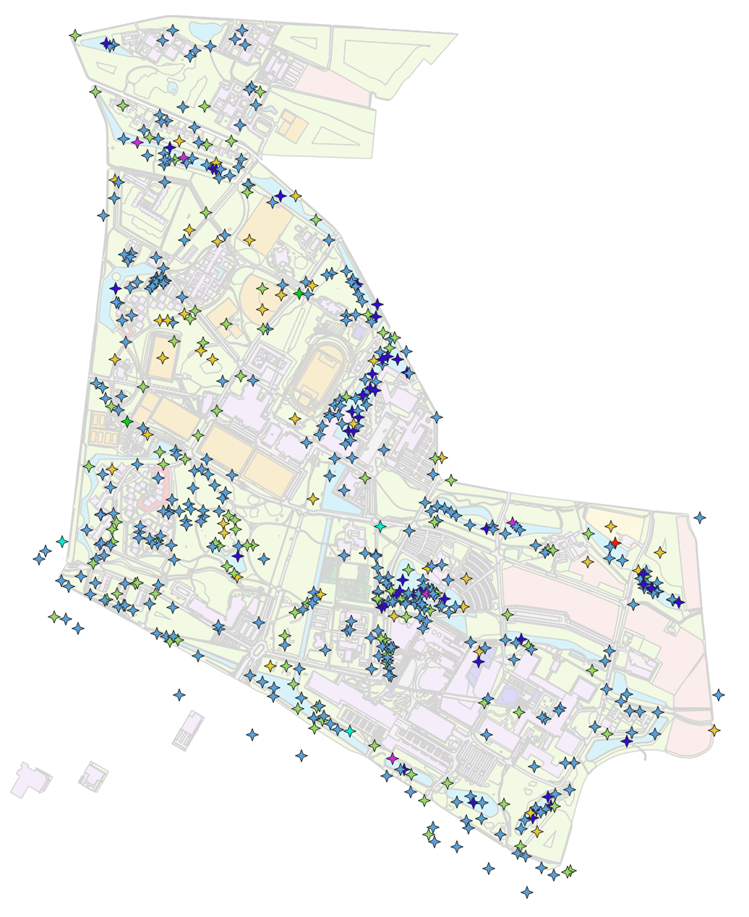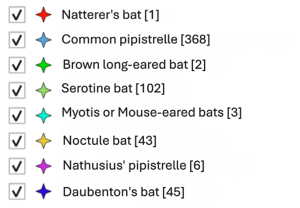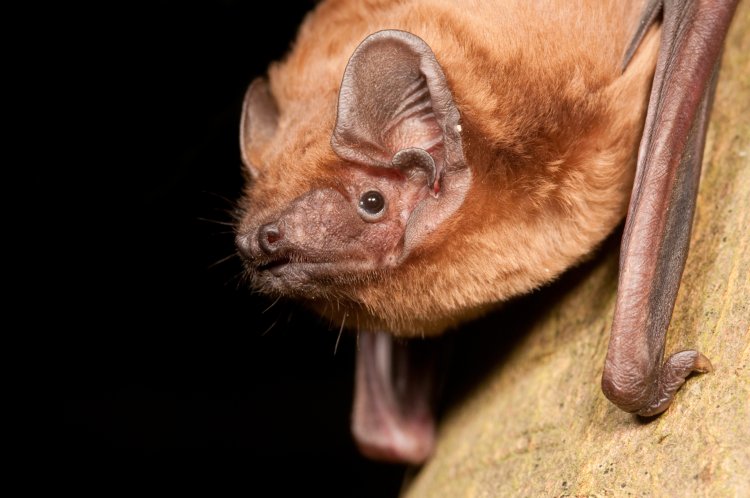Turn that around: known makes loved. That certainly applies to me. There is something new to be told about bats almost every day.
Last year, researchers using a small transmitter discovered a maternity colony of the Barbastelle bat—a species not previously known to reproduce in the Netherlands. What did they find? No fewer than seven Barbastelle bats, likely all females with young, sheltered beneath a loose piece of tree bark. This remarkable discovery occurred in Winterswijk, not far from the University of Twente.
Technology and ecology: working hand in hand
This discovery relied on transmitters and bat detectors. A bat detector picks up ultrasonic bat sounds, showcasing the fascinating intersection of technology and ecology—a synergy that is common in bat research. Without a bat detector, studying bats becomes less engaging. Once a bat is detected, infrared or thermal imaging cameras are often used to capture stunning footage!
Maternity colonies
One species that winters in the Netherlands is the Nathusius’ pipistrelle. In spring, females of this species migrate to Eastern Europe to give birth. This year, a third maternity colony of this species was found in the Netherlands. Two of these colonies were discovered in North Holland, but the first was found in Overijssel in 2017. How incredible would it be if the fourth colony were discovered right here on the UT campus?


Map showing all bat species observed on UT's campus (in Dutch). Data from consultancy firm Eelerwoude in 2017.
Nathusius’ pipistrelles are known for their long migrations, often exceeding 2,000 kilometers. Remarkably, these bats weigh just seven grams. Their migration typically occurs at night, as bats’ echolocation allows them to navigate effortlessly in darkness.
A unique discovery
October is famous for spectacular bird migrations. Birdwatchers head out to observe birds flying south and hope to spot rare species along the way. On October 30, 2022, a group at a bird-watching site in Houten caught sight of something “swallow-like” through their binoculars. To their surprise, it turned out to be bats—specifically, one of the largest Dutch bat species, the noctule bat, named for its beautiful reddish-brown fur. The noctule bat is also one of the species found on the UT campus.
The birdwatchers witnessed 32 migrating noctule bats within just 45 minutes around 2:00 PM. Why were these bats migrating during the day? Were they cold, hungry, or driven by some other reason to migrate at this unusual time? Migrating during the day poses risks, as predators are far more active than they are at night.

Noctule bat, Paul van Hoof / Buiten-beeld
The diet of bats
In the Netherlands, bats primarily eat insects and spiders—and lots of them! In addition to mosquitoes, some species consume cockchafers, while others target moths, such as the oak processionary moth. Any objections? Not at all! In fact, bats have even been introduced into farming areas to help control pests in barns. Forget "Farmer Wants a Wife"—search for "Farmer Wants a Bat" (Boer Zoekt Vrouw - Boer Zoekt Vleermuis - in Dutch) and you’re sure to find intriguing articles about how bats can assist farmers by reducing problematic insect populations.
Now that bats are a little better known, let’s all say: Bats, familiar and beloved. Interested in learning more about these fascinating creatures? Click here for a mini-course on bats by KNNV Regio Enschede.
Biodiversity at UT
Strengthening biodiversity on our campus is one of our sustainability goals at the University of Twente. By improving monitoring, we gain knowledge about biodiversity on campus in general, which helps us decide on the best ways to support it. In 2024, we started the yearly Bioblitz, in which anyone can help monitor species via the app ObsIdentify. Several activities were organised to raise awareness of biodiversity (such as bird observation). A biodiversity council was established, where CFM (Campus & Facility Management) consult with biodiversity enthusiasts on how maintenance can contribute to an improved habitat for species. Furthermore, thanks to a Climate Centre grant, we are working on making data on green maintenance and biodiversity accessible for research and education.
Would you like to find out more about sustainability at UT? Please go to utwente.nl/sustainability.





